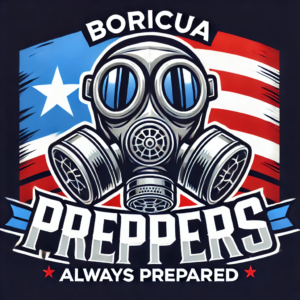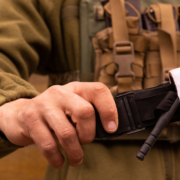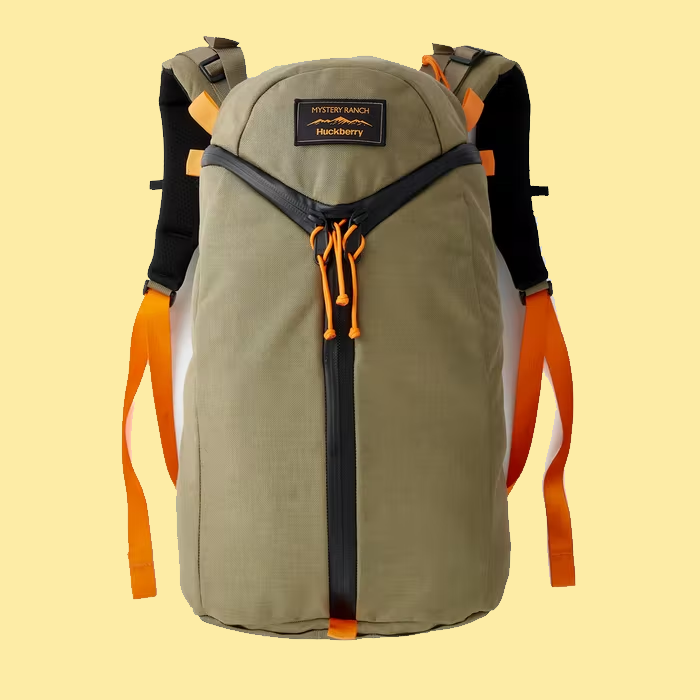Posts
The Basics
Bug-out bags, also known as BOBs, are emergency preparedness kits designed to help individuals and families survive during a crisis situation. They are typically backpacks or duffel bags that contain essential items like food, water, shelter, first-aid supplies, tools, and clothing. The purpose of a bug-out bag is to provide individuals with everything they need to survive for at least 72 hours in case they have to evacuate their homes due to natural disasters, civil unrest, or other emergencies.
Some of the important factors to consider when building a bug-out bag include the size and weight of the bag, the climate and terrain of the area, the number and ages of the people who will be using the bag, and the specific needs and preferences of each individual. It is important to regularly evaluate and update the contents of a bug-out bag to ensure that all items are in good condition and up-to-date.

Why Only 72 Hours?
Bug-out bags are recommended for 72 hours because they are designed to provide you with the essentials that you need to survive during an emergency or disaster situation. The first 72 hours of an emergency are often the most critical and can be the difference between life and death. This timeframe also allows emergency responders to reach you and for the initial chaos to calm down. Having a bug-out bag and being prepared means you won’t have to rely on assistance from others and can take care of yourself and your loved ones until help arrives.
What Is The Recommended Size And Weight For My Bug-Out Bag?
Bug-out bags should ideally weigh between 15 and 25 pounds, depending on the individual’s physical capabilities. A well-packed bag should contain essential survival items and tools for defense and navigation.
The bag size should suit the situation and the individual carrying it. A proper bug-out bag should be large enough to carry all necessary survival gear and food yet not too bulky to slow down the carrier. Most bags range from 20 to 50 liters in size, depending on the person’s level of fitness and the planned duration of the emergency.
Lightweight materials (such as nylon) are preferable to heavy materials (such as canvas), and the bag should have multiple compartments for easy organization. Additional features such as hydration bladder compatibility, MOLLE (modular lightweight load-carrying equipment) webbing, and sturdy construction are also beneficial. Ultimately, the size and features of the bag should be chosen based on the individual’s needs and situation, considering the climate and the expected duration of the stay away from civilization.
A smaller and more compact bag is ideal for shorter trips or emergency situations where mobility and agility are necessary. On the other hand, a larger bag offers more storage space but is less mobile and can become cumbersome, especially in challenging terrains or long journeys.
In summary, the recommended size and weight for bug-out bags are determined by individual needs, level of physical fitness, environmental factors, and duration of stay.
15 Essential Items For Your Bug-Out Bag
The Backpack
Food
When it comes to packing food for a bug-out bag, it’s important to select items that are lightweight, non-perishable, and high in calories.
Some good options to consider include energy bars, protein bars, trail mix, beef jerky, peanut butter, crackers, and canned foods like tuna, chicken, and beans. Have some instant coffee or tea to provide a caffeine boost.
Ultimately, the specific items you choose will depend on your personal preferences and any dietary restrictions you may have. Remember to rotate your stock periodically to ensure the food remains fresh and safe to eat.
Water
Water is essential for survival and is a crucial consideration for any bug-out bag. It’s recommended to pack at least 2 liters of water per person per day. However, this much water might not be possible to carry, so alternative water sources should be considered. Water purification tablets, filters, and water bottles with built-in filters are great options to treat water found in nature.
Other ways to collect water are relying on rainwater, dew collection, or digging for water in dry riverbeds. A small metal container to boil water is also an essential item to have in your bug-out bag. Additionally, you can also store collapsible water storage bags for emergency situations. Regardless of the method used, ensuring access to clean drinking water should be at the top of your list when preparing your bug-out bag.
Don’t forget a water canteen is an essential item to include in a bug-out bag because it allows you to carry a supply of clean water for drinking and cooking. When choosing a water canteen, look for one made of durable and lightweight material, such as stainless steel or BPA-free plastic.
Cooking Gear
When it comes to packing cooking gear for your bug out bag, there are a few key items that are essential. First and foremost, you’ll need a portable stove. Look for a lightweight option that runs on small fuel canisters, such as a backpacking stove or a camping stove. Make sure to pack extra fuel canisters as well.
In addition to the stove, you’ll need a pot and pan for cooking food and boiling water. Look for options that are lightweight and compact, such as collapsible silicone pots and pans.
Other useful items to pack include a set of utensils (fork, spoon, and knife), a can opener, a portable water filter, and a dish towel or sponge for cleaning.
When packing your cooking gear, make sure to keep the weight and size of each item in mind. You’ll want to minimize the overall weight of your bug out bag, so prioritize compact and lightweight options.
Shelter
When it comes to creating a bug-out bag, one of the most important items to include is shelter gear. This will ensure you are protected from the elements and able to get some much-needed rest when on the go. Some key items to consider include
- A lightweight and durable tent
- A waterproof tarp or poncho for extra protection
- A sleeping bag rated for your climate
- An emergency blanket for extra warmth
- A high-quality sleeping pad to protect you from the ground
When choosing your shelter gear, make sure you consider the weight and size of each item, as you need to ensure it fits comfortably in your bug-out bag. Additionally, test your gear before packing it away so you know how to set everything up quickly and efficiently when the time comes.
Illumination Devices
Consider a headlamp or handheld flashlight, which provides hands-free operation and a brighter, more focused beam. Ensure your lighting tool is durable and weather-resistant. Look for options that use rechargeable batteries or have a long battery life to avoid the hassle of replacing batteries.
Ensure you carry extra batteries or a power bank if you need to recharge your lighting source. Don’t underestimate the value of small glow sticks or chemlights, as they can be useful for marking your campsite or signaling for help without draining precious battery power.
Lastly, if you live in an area known for intense weather conditions, consider investing in additional weather-resistant lighting options like waterproof flashlights or solar-powered lanterns.
It’s essential to have reliable fire-making tools in your kit. At a minimum, you’ll want to carry high-quality lighter or waterproof matches, a magnesium fire starter, and a few spare lighters or matches in case of emergencies.
Other fire-making tools that you may want to consider adding include a fire piston, charcloth, flint, and steel, and a small pocket stove with fuel tablets. It’s also wise to pack some dry tinder material, such as cotton balls, wood shavings, or dryer lint, in a waterproof container.
When selecting fire-making tools for your bug out bag, prioritize lightweight, durable options that are easy to use and carry. Practice using your tools before relying on them in the field, and store them in a dry, secure location within your kit.
Navigational Items
When preparing a bug-out bag, it’s important to include navigational items to help you find your way to safety. A map and compass should be at the top of your list. Make sure you have a detailed topographical map of the area you will be traveling through, and don’t forget to bring a small binocular.
A GPS device can also be useful, but bring extra batteries and learn how to use it beforehand. Marking your route and important landmarks with bright tape or flags can help you stay on track. A whistle and signal mirror can communicate with rescue teams or others in your group.
Finally, don’t forget to pack a reliable headlamp or flashlight with extra batteries, especially if you will be traveling at night. With these navigational items in your bug-out bag, you’ll be better equipped to find your way to safety in a crisis situation.
First-Aid Kit
A first aid kit and a trauma kit are essential components of a bug out bag, as natural disasters, accidents, and other emergency situations can quickly turn dangerous and potentially life-threatening without proper medical care. A first aid kit should contain basic items such as band-aids, gauze, disinfectant, and painkillers.
Meanwhile, a trauma kit should include supplies such as tourniquets, pressure dressings, hemostatic agents, and chest seals, as these items can help stabilize someone experiencing severe bleeding or other serious injuries.
It’s important to remember that both of these kits should be tailored to your personal health needs and the environment in which you will be using them. Regularly check and maintain your kits, and consider taking a first aid or wilderness medicine course to learn how to use their contents effectively.
Communication Devices
In a bug-out bag, communication devices should be considered crucial items to include. Some important communication devices to consider adding to your bag include:
- A portable AM/FM radio to stay up-to-date on important news and alerts
- A two-way radio to communicate with others in your group
- A satellite phone for more reliable communication in remote areas.
Additionally, consider adding a whistle, signal mirror, or flare to attract attention for rescue services. It is also a good idea to have a fully charged power bank to keep your devices running in case of extended time without power. Make sure to consider the weight and size of communication devices when adding them to your bug-out bag so they don’t become too heavy or bulky to carry.
Working Tools
One of the most important components of a bug-out bag is working tools that can be used for survival in various situations. Some of the essential working tools for a bug-out bag include:
- A multi-tool knife
- A survival hatchet
- Durable cordage
- High-quality gloves
- A saw
- And a shovel
These tools can help with shelter building, food gathering and preparation, and water procurement. When selecting working tools for a bug-out bag, it is essential to assess personal needs and skills. The chosen tools should be dependable, lightweight, and easy to carry, making them ideal for emergency situations. Having well-chosen tools in a bug-out bag can make all the difference in ensuring preparedness and survival in an emergency.
Hygiene
Hygiene is an important consideration for any bug-out bag, as it can help prevent illness and maintain morale. Basic hygiene items should include:
- Toothpaste,
- A toothbrush,
- Soap,
- Shampoo,
- A comb
- Wet wipes or toilet tissues
- Hand sanitizers
- A pack of tissues
- A small bottle of insect repellent
- Sunscreen protects against harmful UV rays
- A small towel or washcloth,
- Menstrual hygiene products for women.
By including these essential hygiene items, you can help ensure that you and your fellow travelers stay healthy and comfortable during a bug-out situation.
Self Defense
When preparing a bug-out bag, it’s important to include defense gear to protect yourself and your family in an emergency. Here are some suggestions for defense gear:
- A tactical pen
- Pepper spray
- Stun gun
- A firearm (if legal in your area and you are trained to use it).
Remember to only use these items for self-defense in a lawful manner. It’s also important to practice operating these tools for familiarity and safety.
Survival Knife
A survival knife is an important tool in any bug-out bag. It can be used for various tasks such as cutting wood, preparing food, building shelter, and defending yourself. When choosing a survival knife, there are several factors to consider.
The blade should be made of high-quality steel that can hold an edge and resist rust and corrosion. The blade should also be thick enough to withstand heavy use without breaking. A full tang construction is also important to provide strength and balance. Other factors include blade length, handle material, and blade shape. It is important to choose a knife that fits comfortably in your hand and comes with a durable sheath for safe storage.
Remember, a survival knife is only effective if you know how to use it properly, so take the time to learn basic knife skills and techniques.
Clothing
When considering clothing for your bug out bag, it is important to prioritize function and durability. Choose clothes that are versatile and can be layered in order to adjust to changing weather conditions. Convertible pants that can be turned into shorts are ideal for the flexibility they provide. Look for clothes that are moisture-wicking and quick-drying, as well as breathable fabrics to prevent overheating.
Additionally, sturdy boots with good ankle support are crucial for walking long distances or navigating unpredictable terrain. A hat to protect from the sun and a lightweight rain jacket are also essential. Avoid cotton clothing, as it is not moisture-wicking and can retain water, leading to discomfort and potential health risks.
Finally, consider packing specialized items such as thermal clothing, gloves, and a balaclava for extreme cold weather conditions. Remember to pack clothes that are comfortable, functional, and versatile to ensure that you can effectively handle whatever emergency situation comes your way.
In Conclusion...
In conclusion, a bug-out bag is an essential item in case of emergencies or crises that may require you to leave your home quickly. It should contain enough supplies to last for at least 72 hours, including food, water, shelter, clothing, a first aid kit, important documents, and cash. However, it’s important to remember that the contents of a bug-out bag may vary based on individual needs, location, and type of emergency.
It’s also important to regularly update and maintain your bug-out bag to ensure that its contents are still usable and relevant. Ultimately, being prepared and having a bug-out bag can provide peace of mind and increase your chances of survival in an emergency situation.



